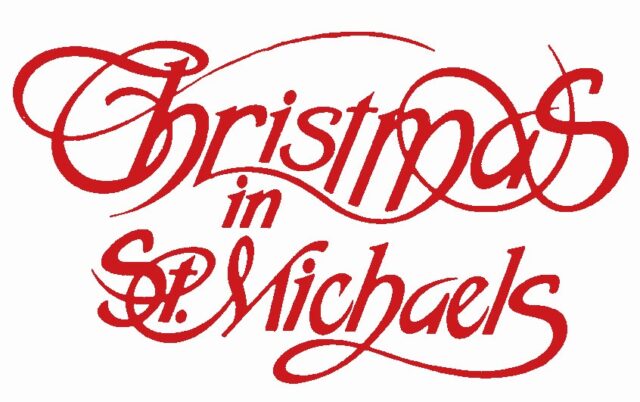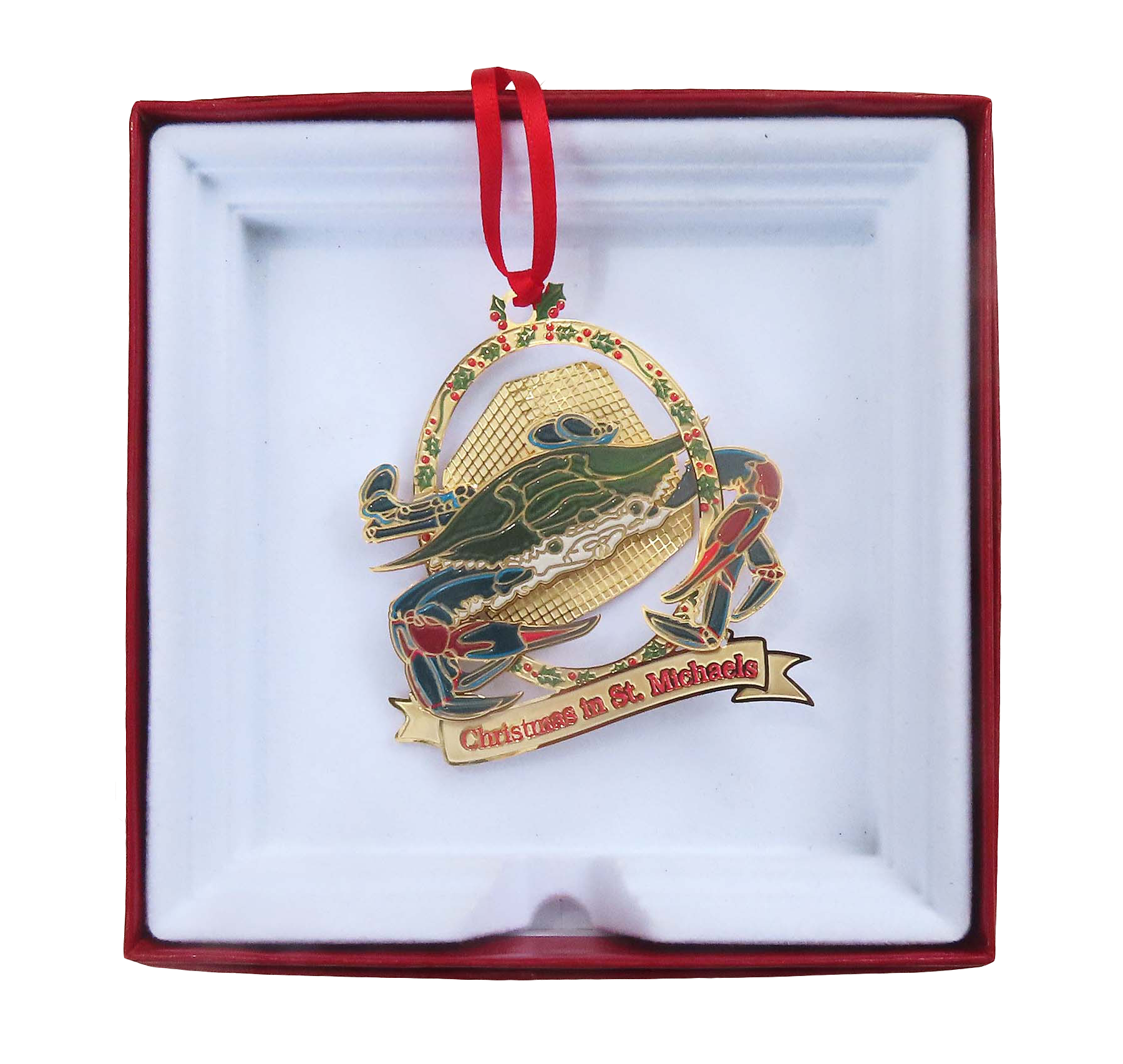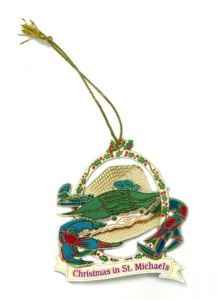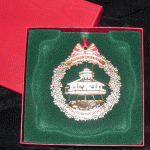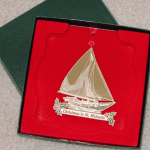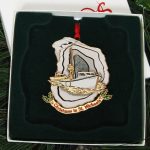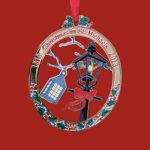2022 Limited Edition Collectors Ornament
The nineteenth annual Christmas in St. Michaels Limited Edition Collectors Ornament celebrates the consummate Chesapeake icon, the Maryland Blue Crab. The ornament was adapted from an original drawing by local designer and artist Scott Sullivan.
In 1989, the Maryland Blue Crab (Callinectes sapidus ) was designated the State Crustacean. The blue crab’s scientific name translates as “beautiful swimmer that is savory.”
Blue crab meat is a delicacy enjoyed worldwide. Chesapeake families have handed down coveted recipes over generations, each with its own secret twist on tradition. Cracking and eating steamed hard-shells or feasting on soft-shells is a summertime staple on Maryland’s Eastern Shore. Crab meat is prepared in innumerable ways — steamed or sauteed, as Maryland crab cakes and crab imperial, or in crab soup and crab dip.
Blue crabs have a brilliant blue color on their front claws (the tips are red on females) with an olive or bluish-green hard shell. They have a pair of paddle-shaped legs that are excellent for swimming, six smaller legs and two large arms ending in claws. Males, called Jimmies, and females, called Sooks, can be distinguished by the apron, on the underside of the crab. The male’s apron is long and slender, resembling an inverted “T”; the female’s apron changes, with an immature female showing a triangular apron and a mature female’s is rounded.
Crabs grow by molting or shedding their shell. After the molt, the crab’s new shell is pliable, thus a “soft shelled crab”. Unlike males, females stop growing when they reach sexual maturity, usually after 21 or 22 molts.
They tend to dwell on the bottom of the sea and are predators to a variety of fish, including dead fish. They feast on other crabs, clams, snails, eelgrass, sea lettuce, and other decayed vegetation. As the water cools in the fall, crabs hibernate by burrowing into the soft bottom where they stay until spring.
Crabs are a major contributor to Maryland’s economy supporting watermen, markets, restaurants, and the tourist and boating industries. In Maryland, blue crabs are the most valuable commercial fishery accounting for over 50 % of all crabs caught nationally.
The ecologic health of the Chesapeake Bay and its many rivers and creeks is crucial to support the crab population. In modern times, crabs have been threatened by pollution and the devastation of bay grasses. During the April – December season, daily catches are carefully regulated in an effort to assure continued crab populations. Severe limits on crabbing can have a strong ripple effect across Maryland’s economy.
